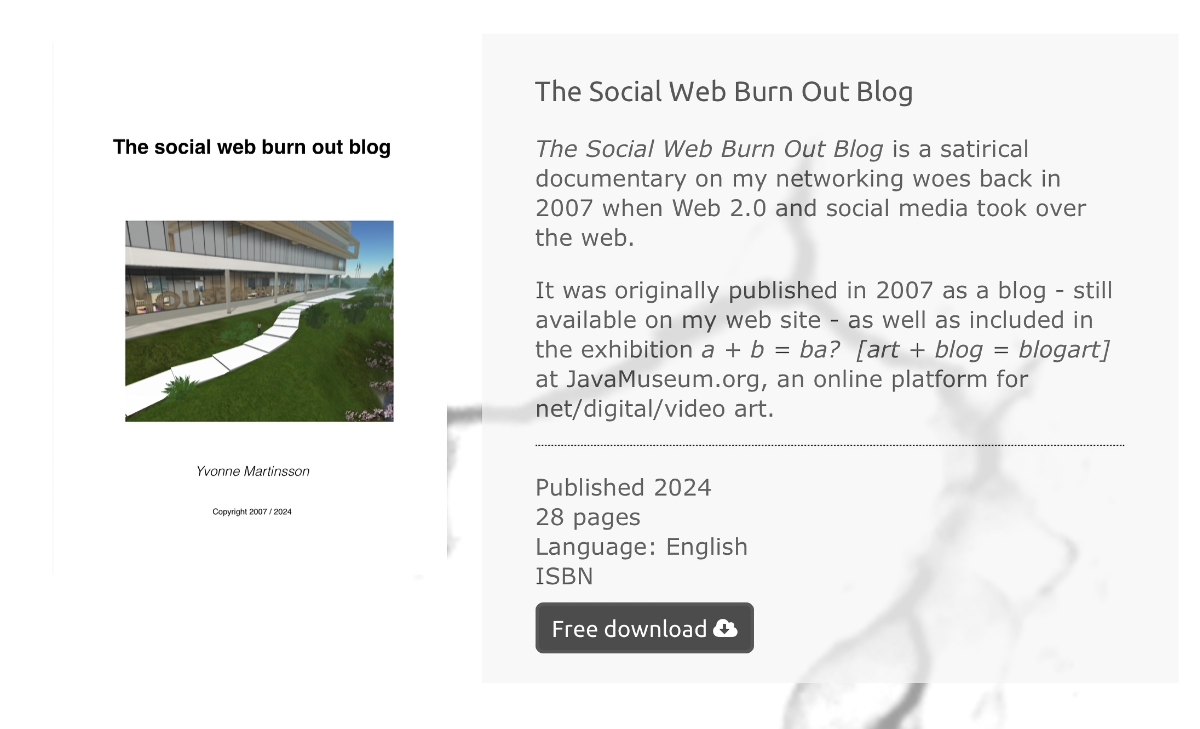complex written or pictorial material > 22/07/05
Hypertext as a literary form rapidly became an abused term both among its defenders and its opponents. Among its defenders hypertext was something of a sesame-open-you to non-linear, open-ended structures where “links and nodes” replace pagination in books. Its opponents rejected hypertext on the grounds that it does not use the technology of new media in new innovative ways – hypertext is still text that could be printed.
Hypertext writers thus tended to be criticized from two sides, if they were not ignored altogether, and much of the criticism is valid for the first-generation writers of hypertext in the late 90s. While leaving evaluation of the texts’s literary quality aside here, they were usually written with disregard to their digital environement, the computer screen. We have all learned that you should not judge a book by its cover, or, if we are of a radical bent, that a flashy cover turns the book into a commodity that should be resisted. In both cases truth and sincerity reside in words, in what is said. It is a cultural heritage that is not easily abandoned.
True, the first-generation hypertext writers were limited by the shortcomings of an emerging, not yet fully developped technology - and we still are. But new technologies breed new literatures and in the early 00s we saw experimental, hybrid forms entering the scene continuously redefining literature. Literature was and is no longer defined solely in linguistic terms – the language of contemporary writing includes design, art, audio, programming, all of which may be integral to a text’s production.
The new state of the art has engendered an array of descriptive terms – digital writing, net art, web art, new media writing, hypermedia – that lack definition. Nevertheless, they hold in common the attempt at escaping the narrowness of hypertext as defined by nodes and links and as not being printable.
But, hypertext did not have this narrow sense when it was coined by Ted Nelson in 1965. As he says:
“Let me introduce the word ‘hypertext’* to mean a body of written or pictorial material interconnected in such a complex way that it could not conveniently be presented or represented on paper. (* the sense of ‘hyper-’ used here connotes extension and generality; cf. ‘hyperspace.’)”
In other words, hypertext in its original sense denotes complex “written or pictorial material” that cannot be printed. It is a definition that leaves the door wide open for different modes of representation that are multimediac in its essence. “Link and node” occurs in Nelson‘s understanding of the term as well, but then as a subcategory. It is not what defines hypertext. Nor is hypertext in Nelson’s sense confined to the browser as the browser had not even been invented in 1965.
Sources
Nelson,Ted. "A File Structure for the Complex, the Changing, and the Indeterminate." Association for Computing Machinery: Proc. 20th National Conference, 1965, pp. 84-100.
Last edited: 2021-01-01 tagged: digital writing filed under: on writing

